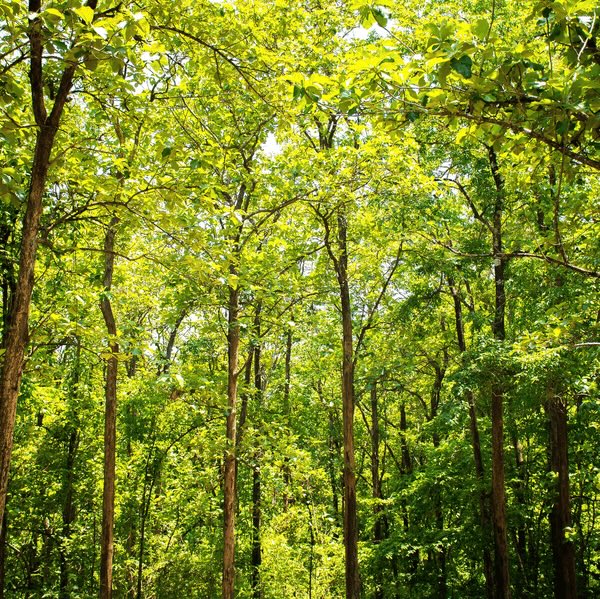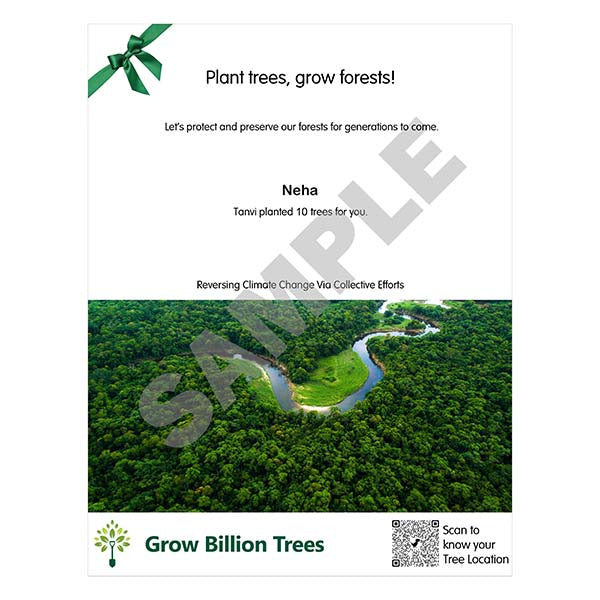


Description: Tree plantation is crucial for both environmental and social sustainability. Trees play a vital role in absorbing carbon dioxide and prod Read more
Description:
Tree plantation is crucial for both environmental and social sustainability. Trees play a vital role in absorbing carbon dioxide and producing oxygen, thereby reducing greenhouse gas levels and improving air quality.
In addition, they prevent soil erosion and provide crucial habitats for wildlife. Furthermore, trees can offer various resources, such as timber and fruit, which can create job opportunities and contribute to poverty reduction.
Planting trees also have positive impacts on communities, including improved health outcomes, increased community involvement, and education opportunities.
In conclusion, planting trees is a simple yet highly effective way to create a healthier environment and a better future for all.
Scope:
- Enhancement of Biodiversity
- Increase in Green Cover
- Reduction of Man-Animal Conflict
- Generation of Rural Employment
- Improvement of Wildlife Habitats
Tree Species:
The species of trees that are planted depend on the project, and they are chosen based on their native habitat in the corresponding ecological zone.
Why trees?
Tree plantation is essential for various reasons, including:
-
Reducing greenhouse gases: Trees absorb carbon dioxide and produce oxygen, thus reducing the levels of carbon dioxide in the atmosphere.
-
Preventing soil erosion: Trees help to stabilize the soil, reducing the risk of erosion, especially during heavy rains.
-
Providing habitat for wildlife: Trees provide shelter and food for many animals and insects.
-
Improving air quality: Trees absorb pollutants from the air, improving the quality of the air we breathe.
-
Enhancing beauty: Trees can beautify landscapes and provide shade, making outdoor spaces more pleasant and enjoyable.
-
Providing resources: Trees can provide us with essential resources such as timber, fruit, and non-timber forest products.
Social Impact:
The social impact of tree plantation can be significant, including:
-
Job creation: Tree plantations can create employment opportunities, especially in rural areas.
-
Improved health: Trees can enhance the quality of air and provide shade, leading to better health outcomes for local communities.
-
Increased community involvement: Tree plantation can bring communities together and promote a sense of ownership and responsibility for the environment.
-
Improved education: Tree plantation can be used as a tool for education, promoting awareness about the importance of trees and the environment.
-
Enhanced quality of life: Trees can provide aesthetic, recreational, and environmental benefits, improving the overall quality of life in communities.
-
Reduced poverty: Tree plantations can provide income-generating opportunities, such as the sale of timber and non-timber forest products, which can help to reduce poverty.
Biodiversity Enhancement
Tree plantation in forests enhances biodiversity by providing habitats for diverse species of flora and fauna, contributing to ecosystem resilience and ecological balance.
Expansion of Green Cover
Planting trees in forests increases green cover, mitigating environmental degradation, soil erosion, and desertification while enhancing the scenic beauty of forest landscapes.
Mitigation of Man-Animal Conflict
Trees in forests serve as natural barriers and habitats, helping to reduce conflicts between humans and wildlife by providing safe spaces and minimizing human-wildlife interactions.
Creation of Rural Employment
Forest tree plantation projects generate employment opportunities for rural communities, including forest-dependent populations, through activities like nursery management, afforestation, and sustainable forest management practices.
Improvement of Wildlife Habitats
Trees in forests provide vital habitats and food sources for wildlife, supporting biodiversity conservation and the preservation of natural ecosystems, thereby enhancing wildlife habitats.
Selection of Tree Species
The selection of tree species for forest plantation projects is based on their compatibility with the forest ecosystem, ecological requirements, and potential to restore degraded habitats and ecosystem functions.
Sustainable Forest Management Practices
Forest tree plantation projects incorporate sustainable forest management practices to ensure the long-term health, productivity, and resilience of forest ecosystems while meeting the diverse needs of society.
Community Participation in Forest Management
Engaging local communities in forest management and tree plantation initiatives fosters their sense of ownership, promotes sustainable resource use, and strengthens partnerships for effective conservation.
Climate Change Mitigation
Forest tree plantation contributes to climate change mitigation by sequestering carbon dioxide from the atmosphere, reducing greenhouse gas emissions, and enhancing the carbon storage capacity of forest ecosystems.
Ecotourism and Recreation Opportunities
Trees in forests enhance ecotourism and recreational opportunities, attracting visitors, and promoting appreciation for nature, cultural heritage, and biodiversity conservation.
FAQ
How does tree plantation in forests enhance biodiversity?
Tree plantation in forests provides habitats for diverse species of flora and fauna, fostering ecosystem resilience and ecological balance, thereby enhancing biodiversity.
What are the benefits of expanding green cover in forests?
Expanding green cover in forests helps mitigate environmental degradation, soil erosion, and desertification while enhancing the scenic beauty of forest landscapes and supporting ecosystem services.
How does tree plantation in forests mitigate man-animal conflict?
Trees in forests serve as natural barriers and habitats, reducing conflicts between humans and wildlife by providing safe spaces and minimizing human-wildlife interactions.
How do forest tree plantation projects create rural employment?
Forest tree plantation projects generate employment opportunities for rural communities through activities like nursery management, afforestation, and sustainable forest management practices.
What role do trees in forests play in improving wildlife habitats?
Trees in forests provide vital habitats and food sources for wildlife, supporting biodiversity conservation and enhancing wildlife habitats.
How are tree species selected for forest plantation projects?
Tree species are selected based on their compatibility with the forest ecosystem, ecological requirements, and potential to restore degraded habitats and ecosystem functions.
What are some sustainable forest management practices incorporated in forest tree plantation projects?
Sustainable forest management practices include biodiversity conservation, watershed management, soil conservation, and community-based forest management to ensure the long-term health and resilience of forest ecosystems.
Why is community participation important in forest management?
Community participation fosters a sense of ownership, promotes sustainable resource use, and strengthens partnerships for effective forest conservation and management.
How does forest tree plantation contribute to climate change mitigation?
Forest tree plantation sequesters carbon dioxide from the atmosphere, reduces greenhouse gas emissions, and enhances the carbon storage capacity of forest ecosystems, thereby mitigating climate change.
What are some ecotourism and recreation opportunities associated with trees in forests?
Trees in forests enhance ecotourism and recreational opportunities, attracting visitors and promoting appreciation for nature, cultural heritage, and biodiversity conservation.



